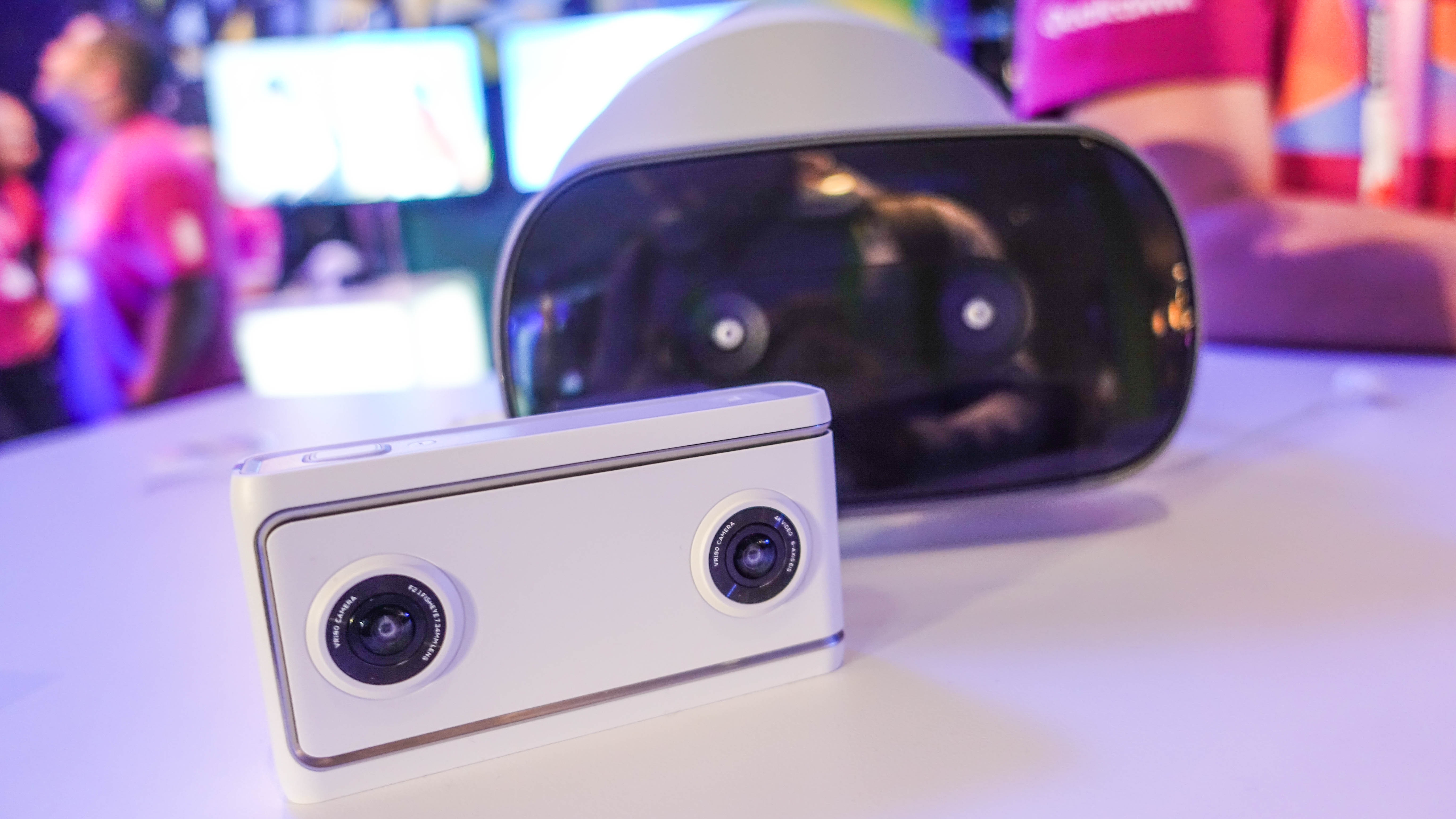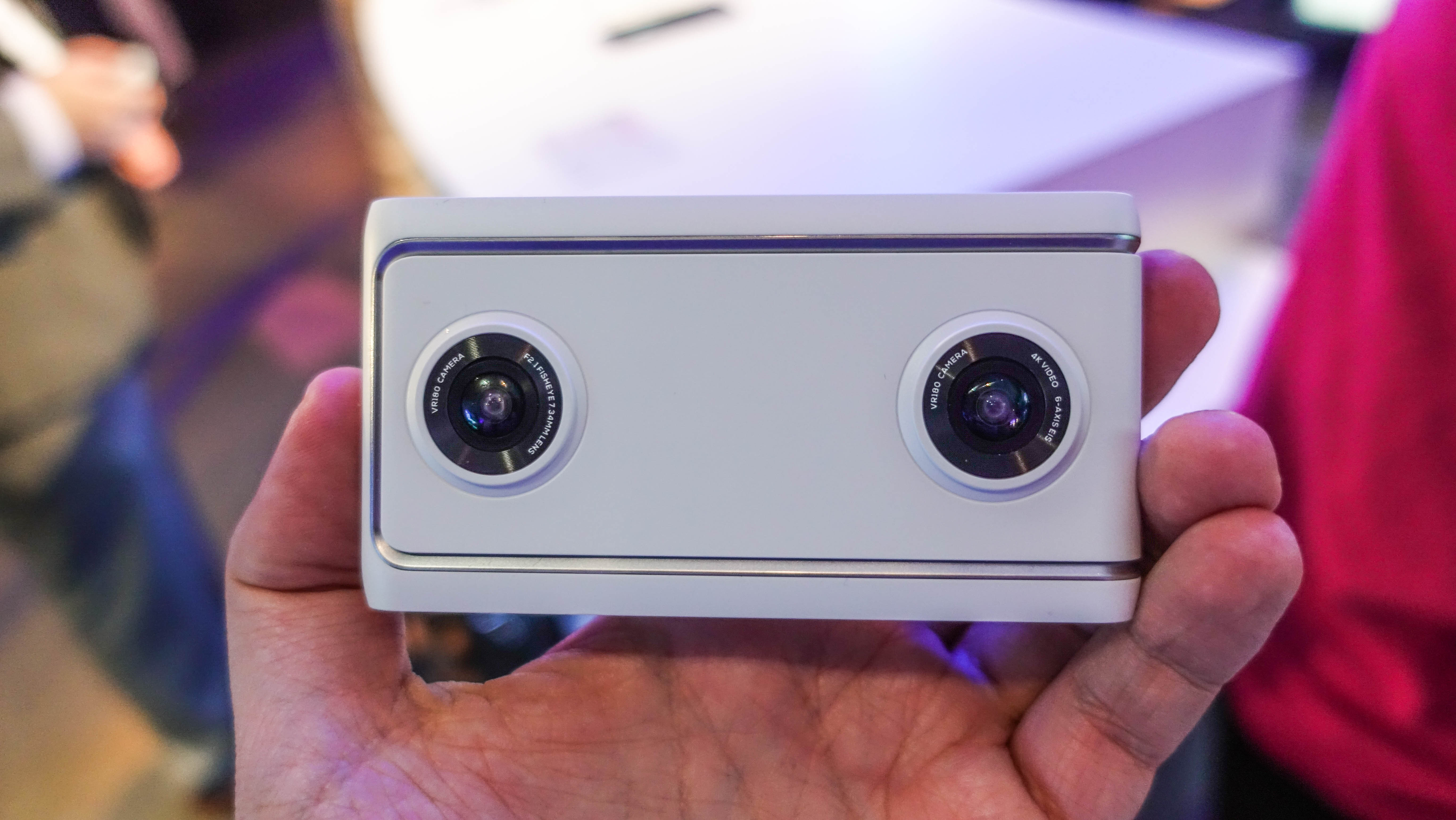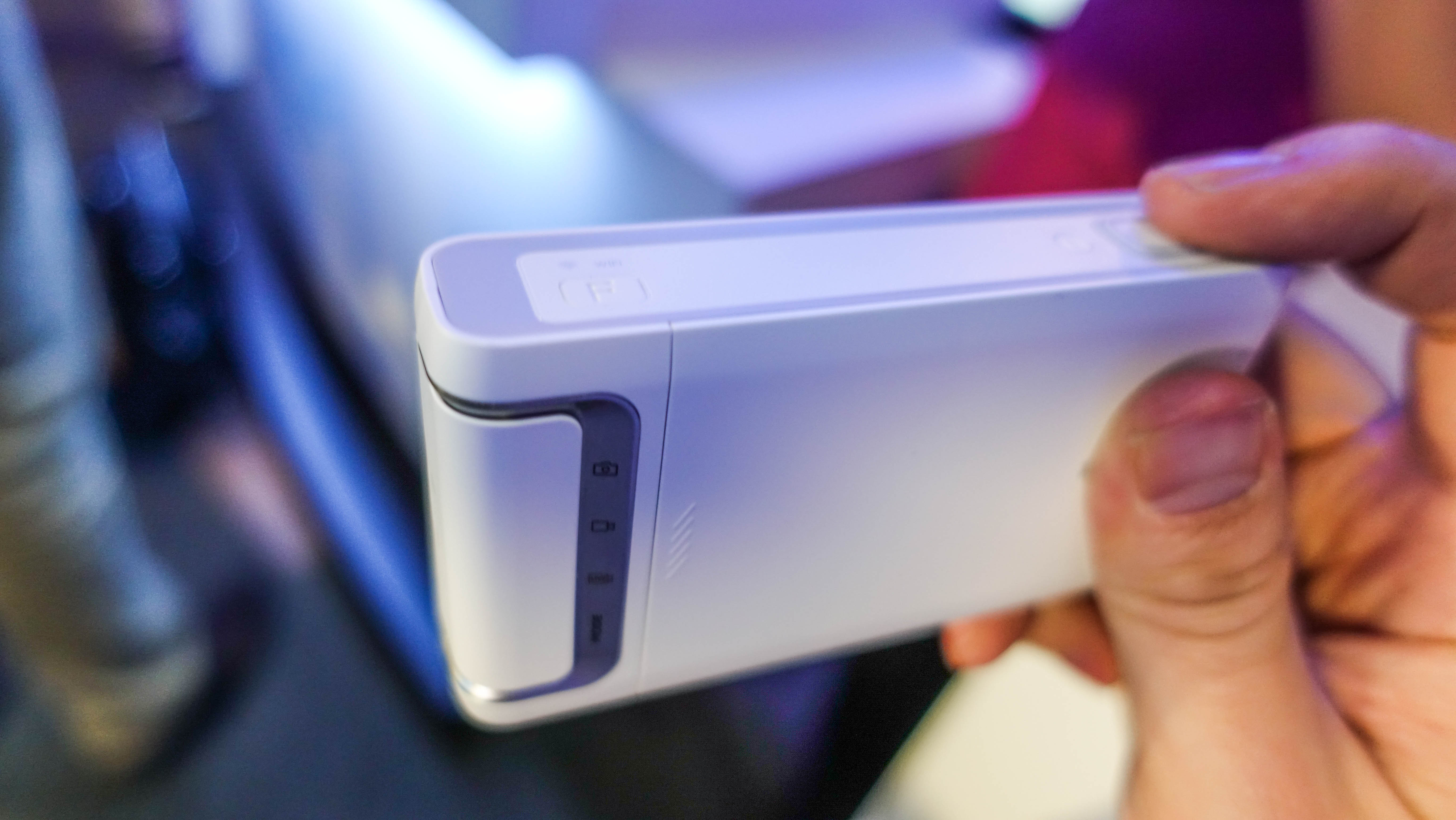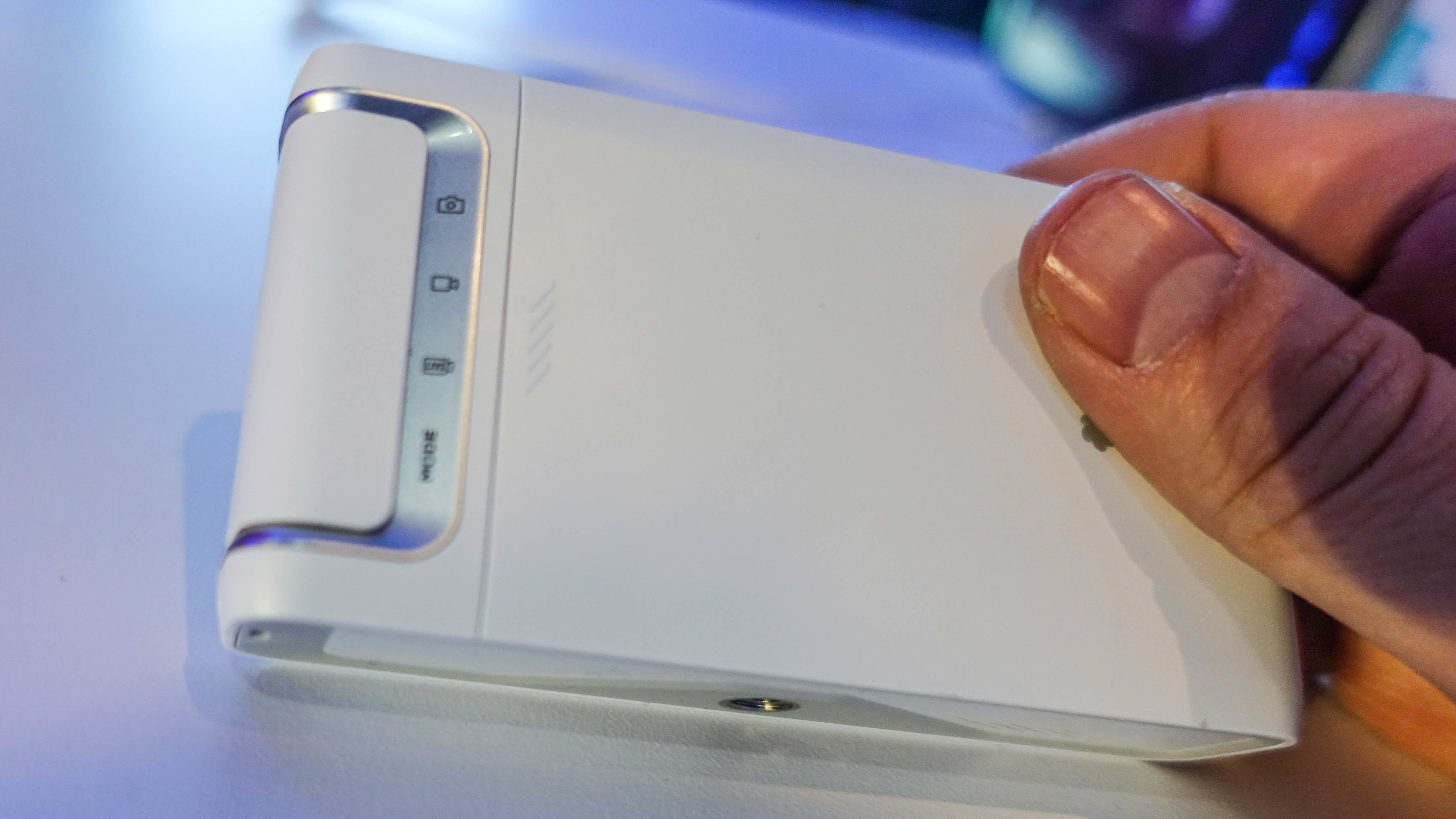The Lenovo Mirage Camera eschews the idea of capturing 360-degree video and, instead, focuses on recording brilliant-looking 180-degree footage in 3D.
We tested Daydream VR-supported camera at CES 2018 and can firmly say that '180' doesn't mean it's half as good as the best 360 cameras available. In fact, for a lot of people, it's simpler to use and better than a 360-degree camera.

The Mirage Camera is shaped like a compact and lightweight point-and-shoot camera – one without a display on back and two 13MP camera lenses in front. They look very much like beady eyes, but that's the magic behind being able to shoot super-wide 3D photos and video in a literal snap. It's also easier for your viewers to understand where you want them to look. 360-degree video can be a bit complex to shoot, edit (file sizes are huge) and watch.
There's a familiar shutter button on the top right and a 1/4-inch screw hole for a tripod on the bottom. The battery is removable that lasts two hours when recording video and charges via USB-C. It'll fit right in your pocket unlike Samsung's first bulbously 360-degree camera, for example.

There's 16GB of internal storage and the ability to optionally add up to 128GB of additional space via a microSD card. We really like this feature, not just because of the expandable storage, but if you forget your microSD card at home (i.e. leave it in your computer), you can still snap 3D photos and video with the camera due to its internal storage. You won't see a "No microSD card" message. How many times has that happened to you?

The Lenovo Mirage Camera is tightly integrated to Google Photos and YouTube, supporting the new YouTube VR180 video format. You can view everything you shoot on a television without the need for special equipment. You don't need a VR headset, like you really would to properly experience 360-degree video. Of course, Lenovo would love it if you did and it was the new Lenovo Mirage Solo standalone Daydream headset.
Here's where could see the Lenovo Mirage Camera getting complicated. Without the viewfinder on back, you can't frame your shot. The argument is that it really doesn't matter thanks to the super-wide aspect ratio. And you can always pair a smartphone to this 3D camera via Wi-Fi Direct. But we've been through this before with screen-less GoPros. We like framing our shot and having to view everything with a smartphone makes for a cumbersome process (often falling out of sync). Everything else about the Mirage Camera appears to be made as simple as can be.

Early verdict
The Lenovo Mirage Camera captures 180-degree video in a 360-degree world – and in a world where there are so many 360 cameras. However, we see the appeal behind its simplicity. It's small, lightweight and acts like a point-and-shoot camera. Of course, the results give you super-wide 3D video, and that's going to be easier to a mainstream audience to capture and watch. We'll test it outside of CES when it gets closer to its middle-of-the-year launch and nail down the price information. Lenovo promises it'll cost under $ 300 (about £221, AU$ 381).